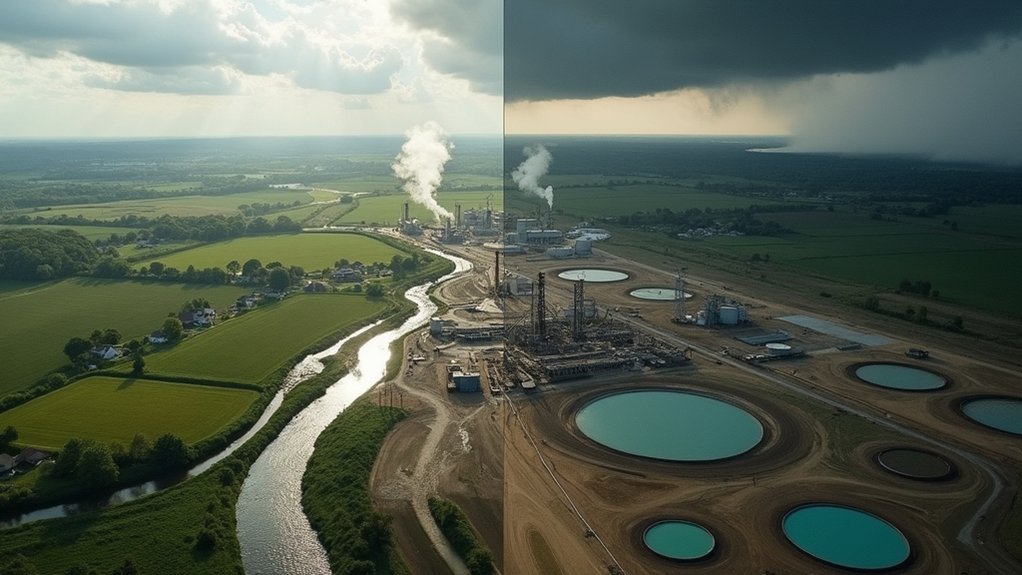While millions of Americans live near oil and gas wells where hydraulic fracturing occurs, most don’t know what chemicals are being pumped into the ground beneath their homes. This lack of transparency stems from a patchwork of state regulations and federal limitations on chemical disclosure requirements for fracking operations.
Currently, 28 states require some level of disclosure for fracking chemicals, but the requirements vary widely. California stands alone in requiring full disclosure of all chemicals with no trade secret exceptions, with Colorado implementing similar policies in 2023. The federal government can’t mandate disclosure on private lands due to a 2005 law specifically banning such requirements.
Trade secret exemptions pose a significant barrier to transparency. States like Kansas, Oklahoma, Pennsylvania, and Texas explicitly exempt chemical manufacturers from sharing information. Most states allow companies to withhold specific chemical identities while only reporting their general chemical family. The EPA found that 11% of chemicals were withheld from public disclosure due to confidentiality claims, hampering full assessment of potential health risks.
The disclosure that does occur happens through various mechanisms. Some states require posting on FracFocus, a website run by the Groundwater Protection Council and the Interstate Oil and Gas Compact Commission. Other states post information on their own agency websites or make it available through open records laws.
Health professionals face particular challenges from limited disclosure. Most states don’t require companies to share trade secret chemicals even with doctors or emergency responders. This creates difficulties when treating patients who may have been exposed to unknown chemicals, as healthcare providers can’t access complete information needed for proper treatment.
Despite these limitations, disclosure policies have shown positive impacts. State mandates have led to operational changes in the fracking industry that have improved surface water quality with measurable reductions in bromide, chloride, barium, and strontium concentrations. Public pressure from available information has influenced company practices, and disclosure requirements appear to encourage the use of less toxic chemical alternatives.
The tension between protecting trade secrets and ensuring public health continues to shape the debate over what Americans should know about the chemicals being used in fracking operations near their communities and water supplies.
References
- https://psr.org/wp-content/uploads/2022/07/chemical-makers-exemptions-from-fracking-chemical-disclosure-rules.pdf
- https://www.factcheck.org/2017/04/facts-fracking-chemical-disclosure/
- https://www.nber.org/digest/20234/disclosure-and-public-pressure-reduce-fracking-related-pollution
- https://pubmed.ncbi.nlm.nih.gov/23552653/
- https://sgp.fas.org/crs/misc/R42461.pdf







